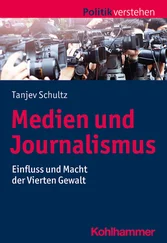As Langlie’s pension complaints escalated, he was transferred, denied training, and demoted, despite favorable job-performance reviews. The company also refused to upgrade his computer from a primitive IBM 286—the industry equivalent of an Etch A Sketch, which couldn’t run engineering software or communicate with the company’s servers. Finally, the human resources department told Langlie’s supervisor that it would “help retire him” and eliminated his job. After Langlie’s thirty-seven years with the company, his pension, which would have been $1,100 a month under the old pension plan, was just $424 a month.
Deloitte & Touche, the giant accounting firm, made a big miscalculation when it tried to switch to a cash-balance plan in 1998: The finance guys apparently forgot that a large number of the firm’s employees were older, experienced actuaries and accountants, who took a professional interest, as well as a personal one, in the plan’s novel design. They were horrified when they connected the dots and saw that their pensions would go over a cliff. They went ballistic, and the firm backtracked, allowing all who were already on the staff when the cash-balance plan was adopted to stick with the old benefit if they wished. [5] A number of companies “grandfathered” older workers under the prior plan. But these transition periods typically lasted only five years, merely postponing, and ultimately increasing, the wear-away.
IBM also underestimated the über-nerds on its staff, though it’s not hard to understand why the company was so complacent: It had cut pensions several times in the 1990s, and no one had noticed. Traditionally, it provided 1.5 percent of pay for each year of service, which resulted in a pension that replaced roughly one-third to almost one-half of a person’s salary in retirement. The calculation was simple: years of service times average pay in the final few years times .015. For example: If someone worked thirty years, and his average pay in the final years was $50,000, the pension would be worth $22,500 a year in retirement ($50,000 x 30 x .015).
Reducing any of these factors would produce a smaller pension. In the early 1990s, IBM reduced all three. In 1991, it capped the number of years of service that got taken into account when calculating pensions, limiting it to thirty years. This meant that if people worked longer than that, their pensions wouldn’t grow. Next, it lowered the multiplier from 1.5 percent to 1.35 percent, again reducing the pensions. Finally, it reduced the salary component; instead of basing the pension on the average salary an employee earned in the final five years of service, it began to use an average based on the entire time of service, including the early years when pay was low.
These early cuts were like gateway drugs: The first one produced a mild high; the next two were more potent; then IBM moved on to the equivalent of heroin: the “pension equity plan.” The very name was deceptive, like “low-fat” and “organic.” “Equity” suggested fairness. More than that, the pension equity plan looked as though it favored older workers.
At first glance, pension equity plans, which went by the zippy acronym PEP, looked similar to cash-balance plans. An employee received an “account” that would grow with an employer “contribution” based on the employee’s average pay over the prior five years or so. This pay figure would then be multiplied by a factor that increased the longer a person worked at the company. This sounded fair since, if the figure is rising, the pension must be increasing each year, too—right?
Well, here’s the beauty of the hat trick: If you multiply three items—all positive numbers—which keep growing each year (the years on the job, the salary, the multiplier), the result is an account with a rising balance. But if you then multiply the result by a declining number, the result can be a pension that isn’t growing—and might even be declining—in value.
That’s what happens in pension equity plans: The interest rate used to calculate the pensions—a rate that wasn’t disclosed—would get smaller as people got older. It was 5 percent for employees under age forty-five, 4 percent for those aged forty-five to fifty-five, and 0.5 percent less for each year above age fifty-five. So, even though the company “contributions” rose as a person got older, multiplying it by a declining (embedded) interest rate caused the pension’s rate of growth to shrink as a person aged. The “easy-to-understand” pension equity plan was a Rube Goldberg contraption of moving parts. “The plan took me months to understand,” Donald Sauvigne, head of retirement benefits at IBM—who had twenty-five years’ experience with pensions—told an audience at a 1995 actuaries conference in Vancouver.
After warming up with the series of modest pension trims, IBM was looking for something that would enable it to ditch its costly “early-retirement subsidy,” which allowed employees in their fifties to retire with nearly the pension they would have at sixty-five. This feature was once common at larger companies, and IBM had added it to its pension plan in the 1980s as an incentive to get workers to leave in their fifties rather than hang around until sixty-five to max out their pensions. It “encouraged departures,” so it “served us well,” Sauvigne told his colleagues at the conference. But IBM found that the subsidy also had the unwelcome effect of encouraging people to stick around until at least age fifty-five so they could lock in the subsidy.
IBM couldn’t just pull the plug on the subsidy, because pension law doesn’t allow a company to take away a benefit a person has already earned or take away a pension right or feature the company has granted. “So we had to design something different,” Sauvigne said. Enter Louis V. Gerstner Jr., IBM’s new president. He’d headed RJR Nabisco in 1993 when it faced a similar dilemma: how to reduce pensions and remove the retirement subsidy without obviously violating the law or provoking an employee backlash. Gerstner and IBM turned to Watson Wyatt, the same consulting firm that had helped Nabisco solve its pension problem.
Watson Wyatt had been marketing its “pension equity plan” design to large employers, with considerable success. Its brochure summed up the benefits: “Younger employees are happier because they see an account-based benefit; older employees are happy because benefits are still rich enough to achieve retirement security at long tenures; the CFO is happy because the PEP eliminates the expensive—and from a business sense counterproductive—early retirement subsidy.”
The brochure didn’t point out another benefit—deception—but it was no secret among the consulting community. “It is not until they are ready to retire that they understand how little they are actually getting,” said a Watson Wyatt actuary at a 1998 panel entitled “Introduction to Cash Balance/Pension Equity Plans.” That got a good laugh from the audience, as did the response by a fellow panelist, who was with Mercer: “Right, but they’re happy while they’re employed…. You switch to a cash-balance plan where the people are probably getting smaller benefits, at least the older, longer-service people; but they are really happy, and they think you are great for doing it.” More laughter.
Watson Wyatt epitomized the new breed of benefits consultants that was revolutionizing the compensation-and-benefits landscape. In prior decades, benefits specialists handled the garden-variety tasks of pension administration and human resources consulting. That began to change in the 1980s as consultants began more aggressively prospecting for business and developing niche specialties in cutting retiree benefits, boosting executive compensation, and managing mass layoffs and early-retirement windows.
Читать дальше












